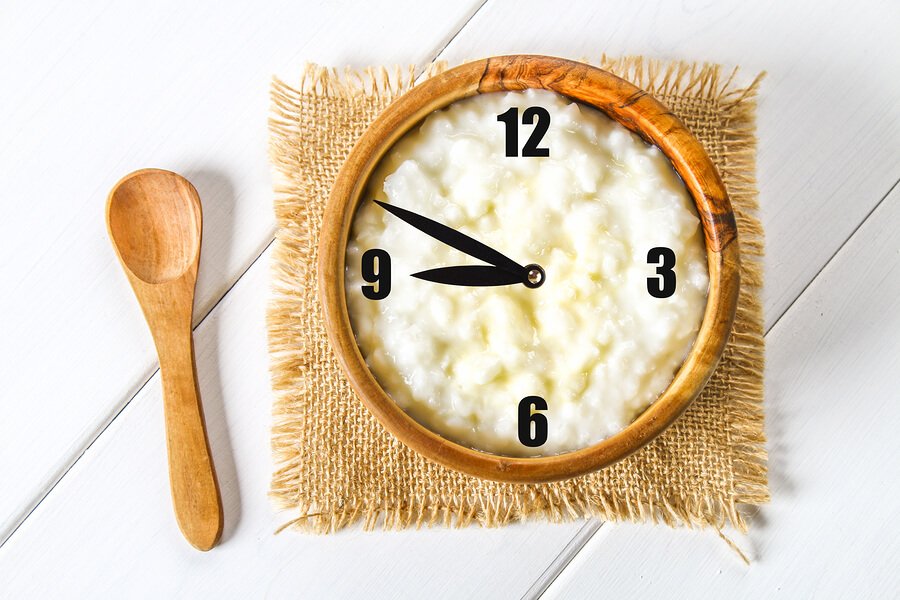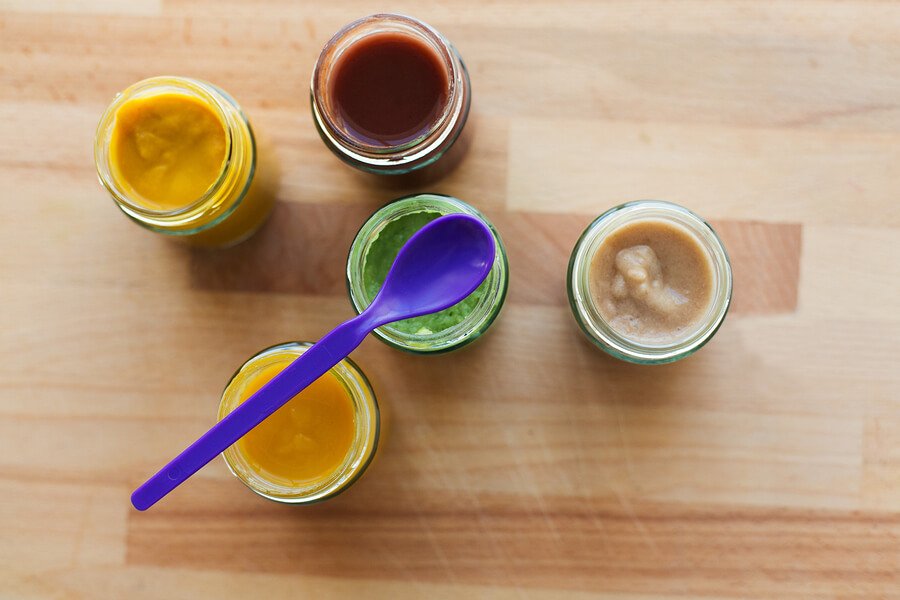How to Introduce Baby Food

The first pureed foods in your baby’s diet are fundamental for his growth. When he reaches 6 months of age, it’s necessary to introduce baby food to his diet so that he can begin to get used to new tastes and textures. In this way, you can “train” his digestive system little by little.
Now, it’s necessary to know which foods to introduce with these purees. In general, we might think that any soft fruit, such as bananas, is sufficient. But in reality, bananas aren’t a good first option. Before introducing bananas, other fruits rich in fiber should be included.
Techniques to introduce baby food
When your baby tastes his first food, his gestures and expressions may indicate that it feels a bit strange. This is a normal attitude, because the food has a texture different from what he has experienced at his young age. Therefore, it’s important for parents to be patient and keep trying.
Set a schedule
It’s important for your baby to begin to eat his first food around the same time so that his body gets used to a schedule. This way, you can avoid overfeeding him. Remember that it isn’t good for your baby to be constantly eating.

Create a quiet environment
As baby food is something totally strange and new to your little one, it’s important for him to be in a comfortable and quiet environment. Ideally there should be no distractions around and, preferably, little noise. At first, it will be difficult for him to sit in the chair alone, so don’t force him. He can also eat while on your lap.
Replace one bottle feeding
To introduce baby food into your child’s diet, it’s important not to completely cut out bottle feeding. Keep in mind that this may be too sudden for the baby. It’s best to substitute one bottle feeding with baby food.
If the child feeds from a bottle at noon, then replace this feeding with baby food. If he has eaten enough, it won’t be necessary to breast or bottle feed. If he hardly ate the baby food, then it will be necessary to do so.
Be persistent, but don’t force it
The amounts of baby food should be small, and you have to be patient when feeding your baby. Many times, parents believe that because their child ate all the food, he will be fine.
While it’s ideal for the baby to finish his food, there is no need to force him to eat too much. If you insist too much with the spoon, you could cause your child to retch, which will make it harder to feed him in the future.
Advice on when to introduce baby food
Although babies might reject their first taste of pureed food, this doesn’t mean that they don’t like it at all. They may reject it because it’s a totally new food or it may feel a bit strange. The key is to create a consistent routine to accustom their body to receiving the food.
Here are some tips that parents should take into account:
- Don’t sweeten the puree or add any salt
- The food should be cut into very small pieces to prevent the baby from choking
- The temperature of the food should be warm
- The texture of the puree shouldn’t be too liquid or too thick
- If the baby turns his head when you offer him the spoon, it may be an indication that he’s full and doesn’t want more.
- When the child has eaten little food and is hungry, complete his meal with a bottle feeding.
- After eating, he may be thirsty. Give him a little water.
- Some children start eating well after 8 months of age, so parents should be persistent.

What foods should you introduce first?
Before introducing baby food, it’s essential to consult with the pediatrician. This professional will be responsible for indicating exactly which foods should be integrated into the child’s diet first. But in summary, these are some of the most recommended:
- Cereals: oats, rice, corn, soybeans, tapioca
- Vegetables: potatoes, carrots, sweet potatoes, pumpkin, leek, lettuce, zucchini
- Fruits: oranges, plums, peaches, apples, pears and bananas
The fruit must be natural or cooked like a compote so that it doesn’t lose all the properties that the baby needs.
Feeding babies is very important because their growth will depend, in large part, on the nutrients their bodies receive. Fortunately, it’s very easy to introduce a variety of foods once we know what is best.
All cited sources were thoroughly reviewed by our team to ensure their quality, reliability, currency, and validity. The bibliography of this article was considered reliable and of academic or scientific accuracy.
- Agencia de Salud Pública de Cataluña. (2016). Recomendaciones para la alimentación en la primera infancia (0 a 3 años). Consultado el 7 de febrero de 2023. https://scientiasalut.gencat.cat/bitstream/handle/11351/4354/recomendaciones_alimentacion_primera_infancia_0_3_años_2019_cas.pdf?sequence=2&isAllowed=y
- Fernández-Vegue, G. M. (2018). Recomendaciones de la Asociación Española de Pediatría sobre la alimentación complementaria. Asociación Española de Pediatría. Consultado el 3 de febrero de 2023. https://www.aeped.es/comite-nutricion-y-lactancia-materna/nutricion-infantil/documentos/recomendaciones-aep-sobre-alimentacion
- Fjeldberg, G. (n/f). Raising healthy eaters. Should kids clean their plate? Mayo Clinic. Consultado el 7 de febrero de 2023. https://www.mayoclinichealthsystem.org/hometown-health/speaking-of-health/raising-healthy-eaters-should-kids-clean-their-plate
- Gavin, M. L. (2021). Feeding your 4-to-7-month-old. Consultado el 7 de febrero de 2023. https://kidshealth.org/en/parents/feed47m.html
- My Health Alberta. Starting solid food: 6-12 months. Alberta Health Services. Consultado el 7 de febrero de 2023. https://www.healthyparentshealthychildren.ca/im-a-parent/older-babies-6-12-months/feeding-starting-solid-foods/
- Organización Mundial de la Salud (OMS). Lactancia materna. Consultado el 7 de febrero de 2023 https://www.who.int/es/health-topics/breastfeeding#tab=tab_1
- Unloock Food. ca. (2020). All about homemade baby food. Dietitians from Canada. Consultado el 7 de febrero de 2023. https://www.unlockfood.ca/en/Articles/Breastfeeding/Infant-feeding/All-about-homemade-baby-food.aspx
This text is provided for informational purposes only and does not replace consultation with a professional. If in doubt, consult your specialist.







